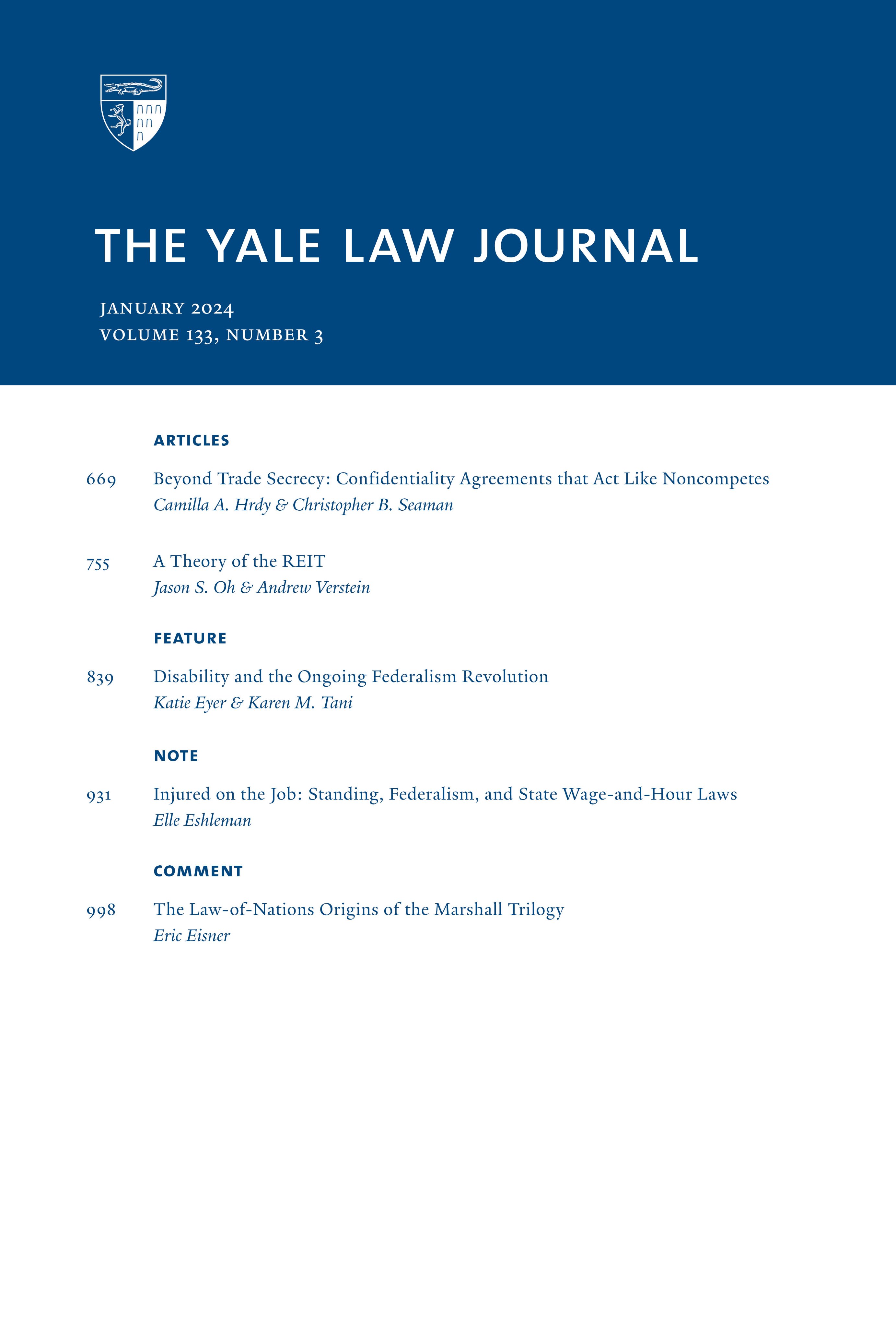适用《规则授权法》中“取代条款”的蓝图
IF 5.2
1区 社会学
Q1 LAW
引用次数: 2
摘要
当国会通过《规则授权法》(REA)时,它把制定司法程序指导方针的权力交给了最高法院的机构专家。在REA中,国会加入了一项条款——现在被称为“取代条款”——宣布现有法规与新规则相冲突时“不再具有进一步的效力”。本评论审查了《美国法典》第18编第3731条与《联邦上诉程序规则》第4(b)(1)(b)条之间涉及“取代条款”的分歧。三个巡回法院对这一冲突进行了裁决,得出了不同的结论。冲突的实质关系到政府对地方法院刑事案件的判决和命令提出上诉的及时性。目前,规则4(b)允许比3731更长的上诉时限,但2007年最高法院鲍尔斯诉拉塞尔案(Bowles v. Russell)可能使任何比3731更长的上诉时限无效。本评论认为,无论鲍尔斯案如何,适用替代条款都有利于规则4(b)的首要地位。采用替代条款为未来有关时效的法规纠纷提供了一个蓝图。在作出这些决定时,本评论认为,法院应根据三个指标来评估规则与成文法的关系:颁布的相对时间较近,各自的作者决定问题的机构能力,以及规则对实体权利的影响程度。本文章由计算机程序翻译,如有差异,请以英文原文为准。
A Blueprint for Applying the Rules Enabling Act's Supersession Clause
When Congress passed the Rules Enabling Act (REA), it deferred to the Supreme Court's institutional expertise to enact guidelines for judicial procedure. In the REA, Congress included a provision - now known as the supersession clause - that declared existing statutes in conflict with new rules to "be of no further force or effect." This Comment examines a divergence between 18 U.S.C. 3731 and Federal Rule of Appellate Procedure 4(b)(1)(B) that implicates the supersession clause. Three circuits have adjudicated this conflict and reached different conclusions. The substance of the conflict concerns the timeliness of government appeals of district court decisions and orders in criminal cases. At present, Rule 4(b) permits a longer appellate time limit than 3731, but a 2007 Supreme Court case, Bowles v. Russell, may invalidate any limit longer than that in 3731. This Comment asserts that irrespective of Bowles, applying the supersession clause favors the primacy of Rule 4(b). Employing the supersession clause provides a blueprint for future rule-statute disputes concerning timeliness. In making these determinations, this Comment argues that courts should evaluate the rule versus the statute according to three metrics: the relative recency of enactment, the institutional competence of the respective authors to decide the issue, and the degree to which the rule affects substantive rights.
求助全文
通过发布文献求助,成功后即可免费获取论文全文。
去求助
来源期刊

Yale Law Journal
LAW-
CiteScore
4.50
自引率
6.20%
发文量
0
期刊介绍:
The Yale Law Journal Online is the online companion to The Yale Law Journal. It replaces The Pocket Part, which was the first such companion to be published by a leading law review. YLJ Online will continue The Pocket Part"s mission of augmenting the scholarship printed in The Yale Law Journal by providing original Essays, legal commentaries, responses to articles printed in the Journal, podcast and iTunes University recordings of various pieces, and other works by both established and emerging academics and practitioners.
 求助内容:
求助内容: 应助结果提醒方式:
应助结果提醒方式:


